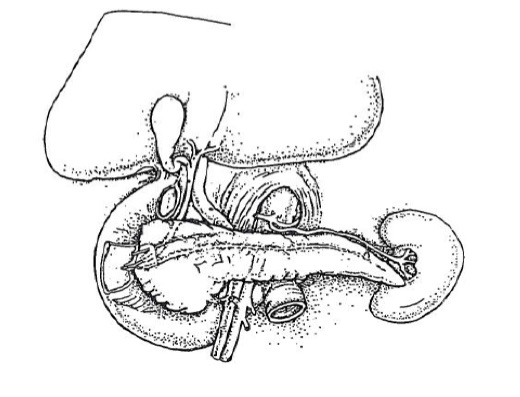Small intestine & ampulla
General
Staging-ampulla carcinoma
Editor-in-Chief: Debra L. Zynger, M.D.
Last author update: 10 December 2020
Last staff update: 2 June 2021
Copyright: 2003-2024, PathologyOutlines.com, Inc.
PubMed Search: TNM staging[title] "loattrfree full text"[sb]
Page views in 2023: 8,082
Page views in 2024 to date: 2,762
Cite this page: Gonzalez RS. Staging-ampulla carcinoma. PathologyOutlines.com website. https://www.pathologyoutlines.com/topic/ampullatnmamp.html. Accessed April 25th, 2024.
Pathologic TNM staging of carcinomas of the Ampulla of Vater, AJCC 8th edition
Definition / general
- All carcinomas of the Ampulla of Vater or the duodenal papilla, including poorly differentiated neuroendocrine carcinomas, are covered by this staging system
- Not covered by this staging system are well differentiated neuroendocrine tumors at this location (use the neuroendocrine tumor staging system instead)
Essential features
- AJCC 7th edition staging was sunset on December 31, 2017; as of January 1, 2018, use of the
8th edition is mandatory
ICD coding
- ICD-10: C24.1 - malignant neoplasm of ampulla of Vater
Diagrams / tables
Images hosted on other servers:

Regional lymph nodes of the Ampulla of Vater

Pancreas / Ampulla of Vater staging
Primary tumor (pT)
- TX: primary tumor cannot be assessed
- T0: no evidence of primary tumor
- Tis: carcinoma in situ
- T1: tumor limited to Ampulla of Vater of sphincter of Oddi or tumor invades beyond the sphincter of Oddi (perisphincteric invasion) or into the duodenal submucosa
- T1a: tumor limited to Ampulla of Vater of sphincter of Oddi
- T1b: tumor invades beyond the sphincter of Oddi (perisphincteric invasion) or into the duodenal submucosa
- T2: tumor invades into the muscularis propria of the duodenum
- T3: tumor directly invades into the pancreas (up to 0.5 cm) or tumor extends more than 0.5 cm into the pancreas or extends into peripancreatic or periduodenal tissue or duodenal serosa without involvement of the celiac axis or superior mesenteric artery
- T3a: tumor directly invades the pancreas (up to 0.5 cm)
- T3b: tumor extends more than 0.5 cm into the pancreas or extends into peripancreatic tissue or
periduodenal tissue or duodenal serosa without involvement of the celiac axis or superior mesenteric
artery
- T4: tumor involves the celiac axis, superior mesenteric artery or common hepatic artery, irrespective of size
Regional lymph nodes (pN)
- NX: regional lymph nodes cannot be assessed
- N0: no regional lymph node involvement
- N1: metastasis to one to three regional lymph nodes
- N2: metastasis to four or more regional lymph nodes
- Notes:
- Regional lymph nodes include peripancreatic, hepatic artery and portal vein nodes
- Minimum of 12 lymph nodes must be recovered for lymph node staging to be considered accurate in curative resections
Prefixes
- y: preoperative radiotherapy or chemotherapy
- r: recurrent tumor stage
Stage grouping
- Stage 0:Tis N0 M0
- Stage I:T1a N0 M0
- Stage IB:T1b - T2 N0 M0
- Stage IIA:T3a N0 M0
- Stage IIB:T3b N0 M0
- Stage IIIA:T1a - T3b N1 M0
- Stage IIIB:T4 any N M0
- any T N2 M0
- Stage IV:any T any N M1
Registry data collection variables
- Tumor size
- Lymph node status
- Margin status
- Histologic differentiation
- Histologic subtype
- Preoperative or pretreatment CEA
- Preoperative or pretreatment CA 19 - 9
- Adjuvant therapy
Histologic grade
- GX: grade cannot be assessed
- G1: well differentiated
- G2: moderately differentiated
- G3: poorly differentiated
Histopathologic type
- Carcinoma in situ
- Adenocarcinoma
- Adenocarcinoma, invasive intestinal type
- Adenocarcinoma, pancreatobiliary type
- Clear cell adenocarcinoma
- Hepatoid adenocarcinoma
- Mucinous carcinomas
- Signet ring cell carcinoma
- Squamous cell carcinoma
- Adenosquamous carcinoma
- Neuroendocrine carcinoma
- Large cell neuroendocrine carcinoma
- Small cell neuroendocrine carcinoma
- Mixed adenoneuroendocrine carcinoma
- Undifferentiated carcinoma
- Undifferentiated carcinoma with osteoclast-like giant cells
- Noninvasive pancreatobiliary papillary neoplasm with high grade dysplasia
- Papillary carcinoma, invasive
Board review style question #1
To qualify as pT3b disease, an ampullary carcinoma must extend at least how far into the pancreas?
- 0.2 cm
- 0.5 cm
- 1.0 cm
- 2.0 cm
Board review style answer #1
Back to top




